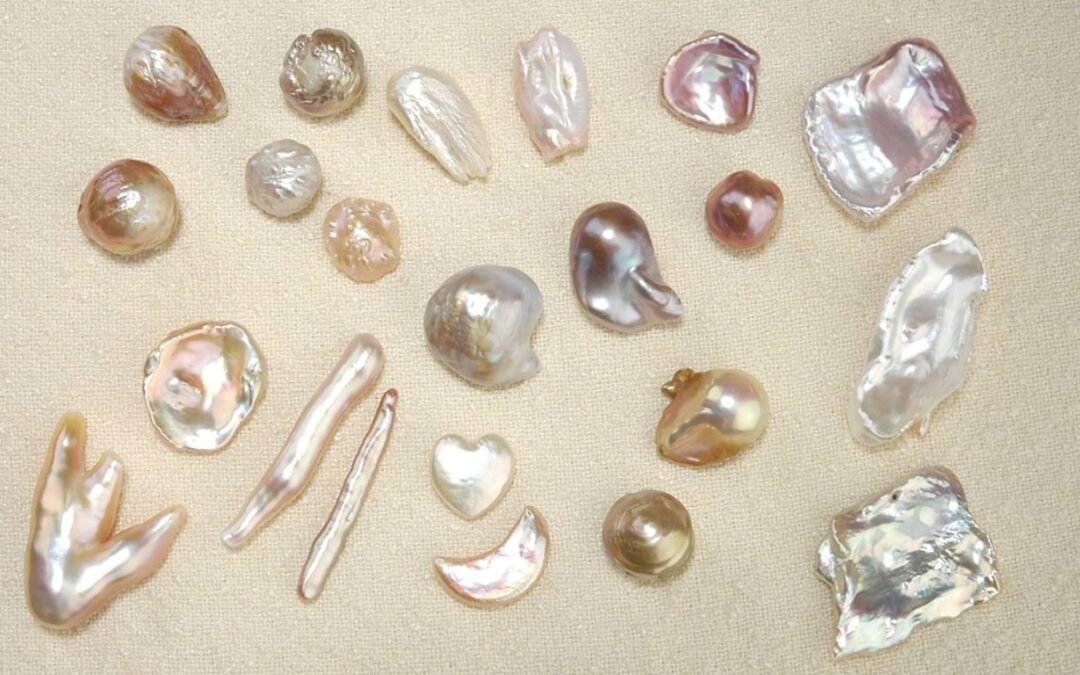Pearls, with their timeless allure, have captured the hearts of people for centuries. While most people envision pearls as perfectly round, they actually come in a variety of shapes that contribute to their unique charm and appeal. The shape of a pearl influences its appearance, value, and appeal, making it an essential factor for collectors and jewelry lovers alike. In this article, we’ll explore the different types of pearl shapes, what makes each type unique, and how they can be incorporated into jewelry.
1. Round Pearls

Round pearls are the most classic and sought-after shape. These pearls are perfectly spherical, with no visible imperfections or distortions in their symmetry. Their flawless shape is why they are often the most expensive and highly valued type of pearl. Round pearls are typically associated with traditional elegance and are used frequently in high-end jewelry, particularly in pearl necklaces and earrings.
- Formation: Round pearls form when nacre layers build uniformly around the nucleus in a near-perfect spherical shape.
- Usage: Round pearls are ideal for classic jewelry designs like the traditional pearl necklace or stud earrings.
- Price: Due to their rarity and high demand, round pearls usually command a premium price.
2. Near-Round Pearls
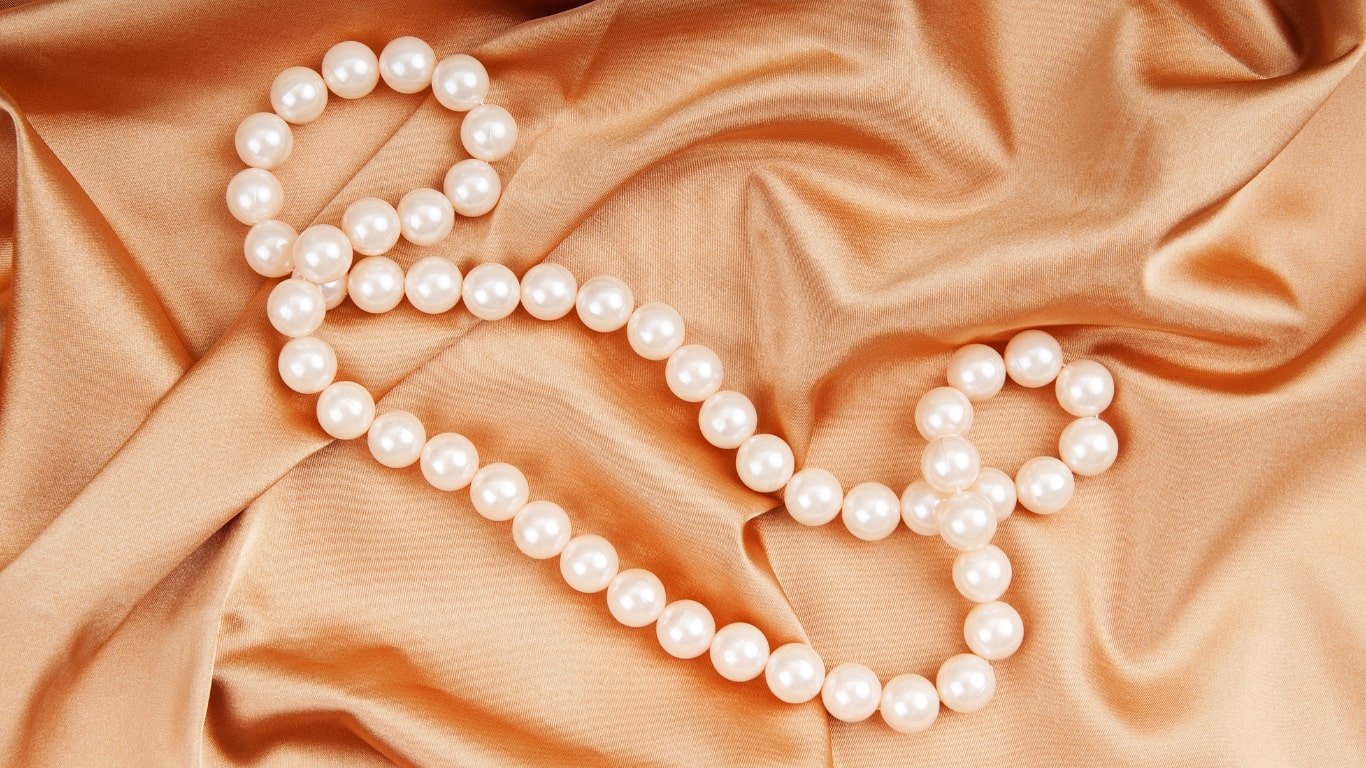
Near-round pearls are very close to a perfect spherical shape but may have slight asymmetry. These pearls are an affordable alternative to true round pearls while still offering a rounded appearance suitable for classic jewelry designs.
- Formation: These pearls form almost perfectly round but can deviate slightly, giving them a subtle irregularity.
- Usage: Near-round pearls work well in designs where perfect symmetry isn’t essential, such as casual jewelry.
- Price: These pearls are generally more affordable than perfectly round pearls, making them a great option for buyers seeking value without sacrificing appearance.
3. Oval Pearls
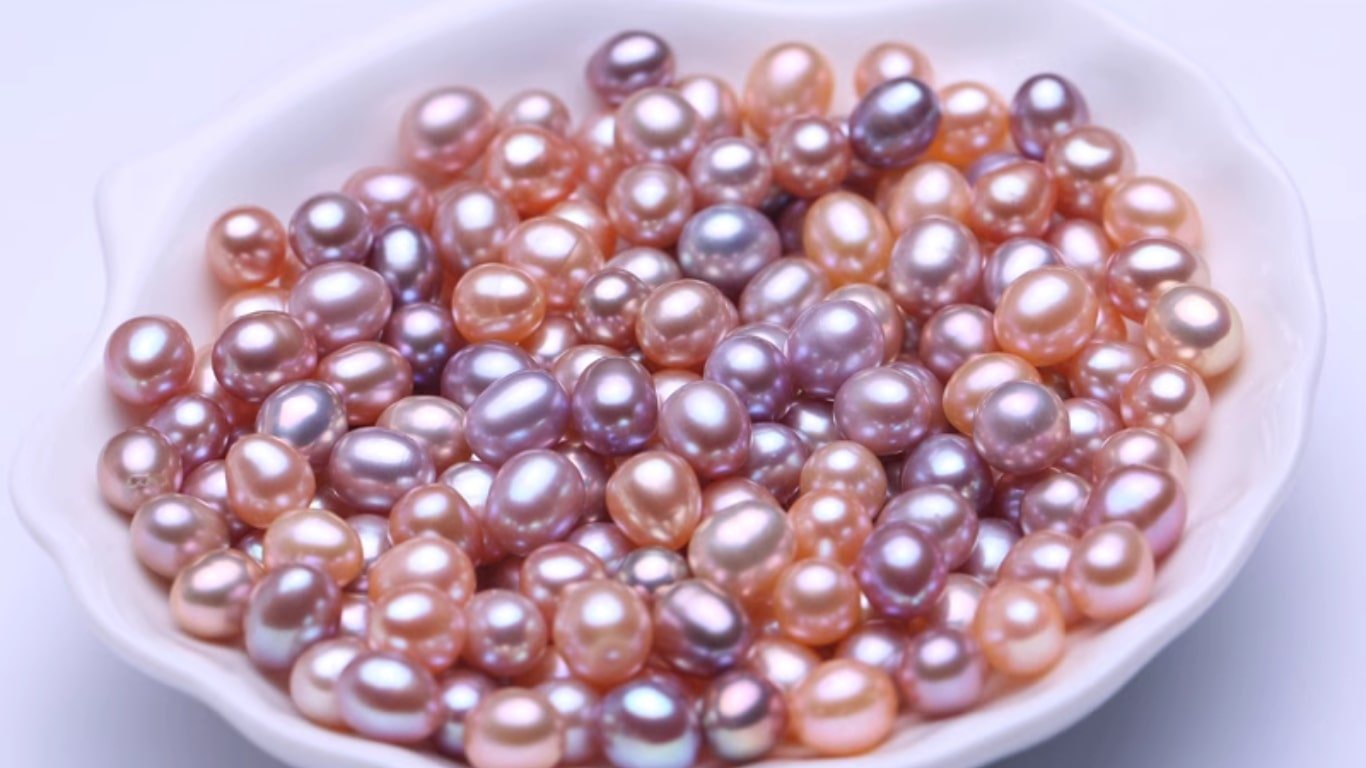
Oval pearls have an elongated, egg-like shape. While they lack the perfect roundness of traditional pearls, their elongated silhouette creates a unique appeal in jewelry pieces.
- Formation: The nucleus of the pearl develops in an elongated manner, causing the nacre layers to follow suit.
- Usage: Oval pearls are often used in pendant designs, where the elongated shape adds elegance and length to the piece.
- Price: Due to their unique shape, oval pearls can vary in price but are typically less expensive than round pearls.
4. Button Pearls
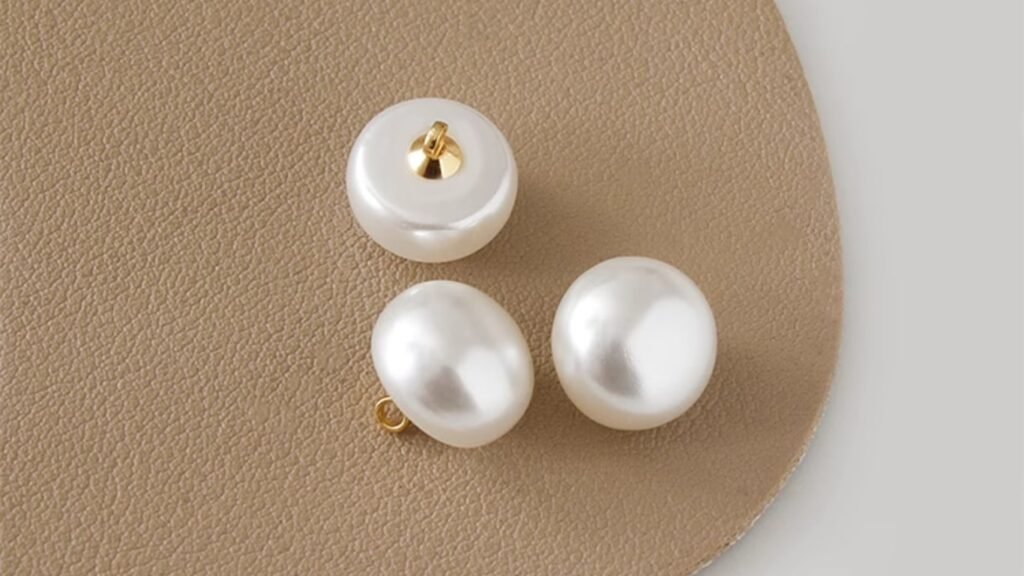
Button pearls have a flatter shape, appearing almost like a button or a disk. They are round when viewed from the front but have a flat or slightly domed back, making them excellent for specific jewelry settings.
- Formation: Button pearls form with a naturally flat side, as nacre layers tend to flatten around the nucleus.
- Usage: Button pearls are perfect for stud earrings, as their flat side allows them to sit flush against the skin. They are also popular in rings and bracelets.
- Price: Button pearls are often more affordable than round pearls, as their shape is more common and less challenging to form.
5. Drop Pearls

Drop pearls, sometimes called teardrop pearls, have a distinctive shape that resembles a drop of water or a tear. They are often used in elegant jewelry designs because their shape is both graceful and sophisticated.
- Formation: Drop pearls develop an elongated, slightly tapered shape naturally.
- Usage: Drop pearls are especially popular in pendant necklaces and drop earrings, where the teardrop shape adds a touch of elegance.
- Price: Drop pearls can range in price, depending on the symmetry and quality of their shape, with symmetrical drop pearls being more valuable.
6. Baroque Pearls

Baroque pearls are characterized by their irregular, asymmetrical shapes. No two baroque pearls are alike, which adds to their uniqueness and appeal. They can range from mildly irregular to extremely abstract in shape.
- Formation: Baroque pearls form in unpredictable ways, with nacre layers developing irregularly around the nucleus.
- Usage: Baroque pearls are popular in statement jewelry, especially for those looking for pieces that are unique and unconventional.
- Price: The value of baroque pearls depends on the level of irregularity, color, and luster, but they are often less expensive than traditional shapes like round or drop.
7. Keshi Pearls
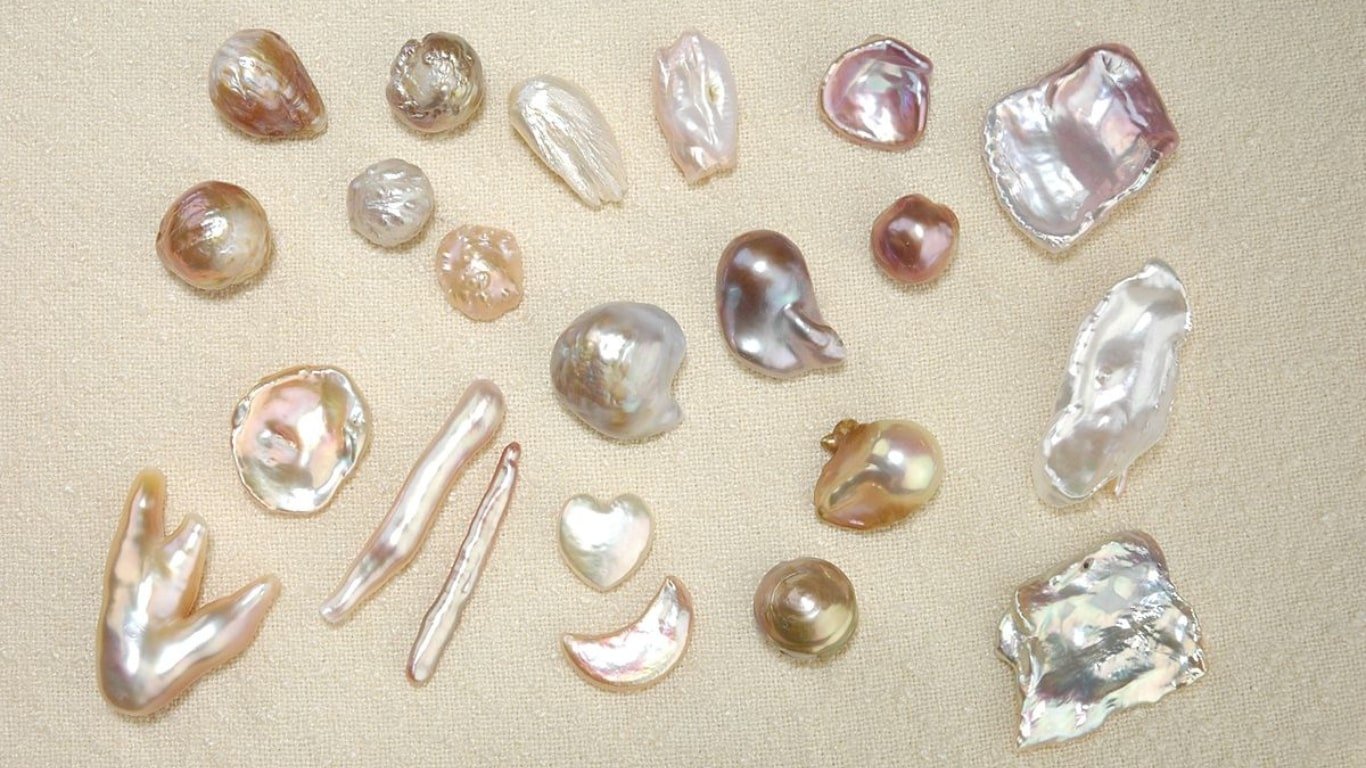
Keshi pearls are a type of baroque pearl known for their irregular, flat shapes. They are often formed as a byproduct of cultured pearl farming when the oyster rejects the nucleus but still forms a pearl with just nacre.
- Formation: Keshi pearls lack a nucleus, which is why they have flat and irregular shapes.
- Usage: These pearls are popular in artistic and bohemian-style jewelry pieces due to their one-of-a-kind appearance.
- Price: Keshi pearls can be valuable, as they are composed entirely of nacre, giving them high luster and durability.
8. Circled Pearls
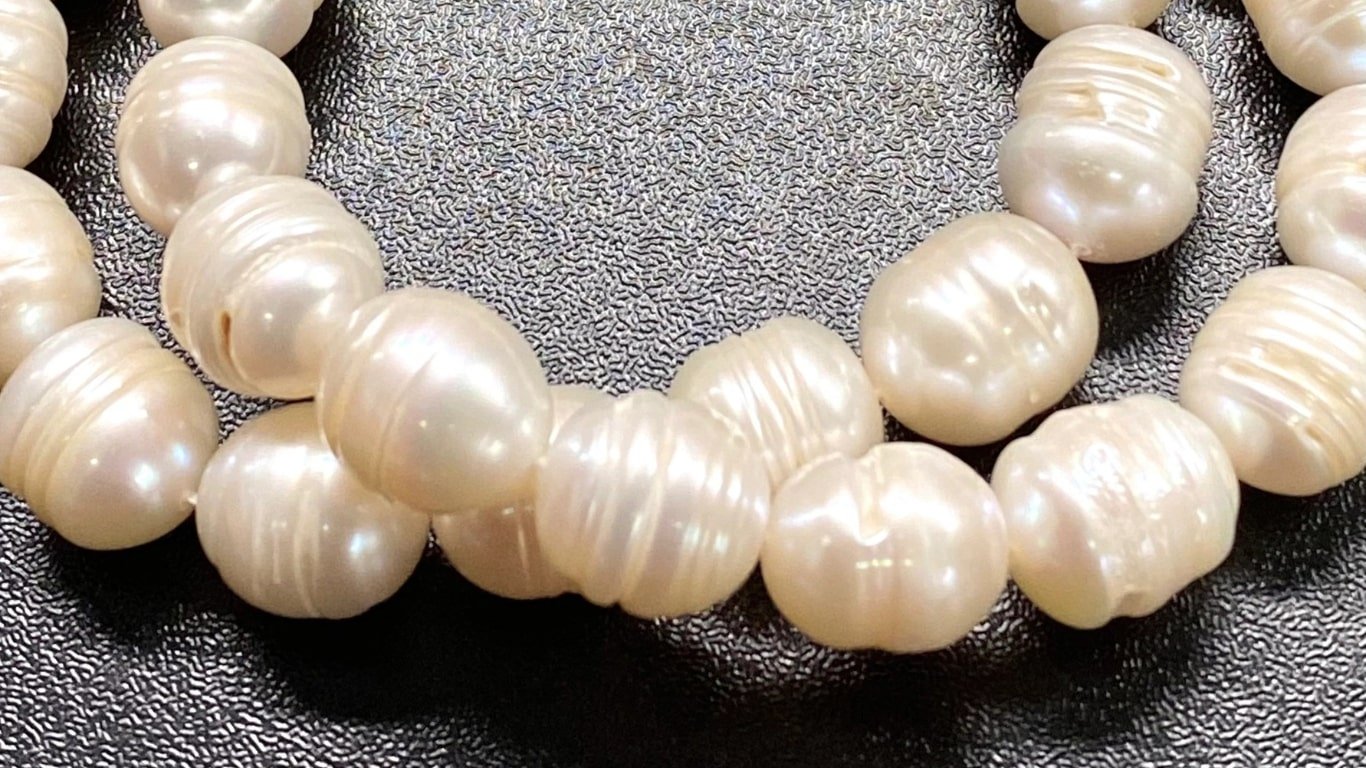
Circled pearls are unique in that they have rings or grooves around their surface. These ridges create a textured appearance, adding to the charm and distinctiveness of the pearl.
- Formation: Circled pearls develop when nacre layers grow unevenly around the nucleus, leading to visible rings.
- Usage: Circled pearls are often used in bold jewelry designs, as the grooves add a natural decorative element.
- Price: While generally more affordable than round pearls, circled pearls are valued for their distinctive appearance.
9. Mabe Pearls

Mabe pearls are also called “half-pearls” due to their formation against the inner shell of an oyster. Unlike other pearls, which are free-formed within the oyster, Mabe pearls develop attached to the shell, giving them a flat back and a domed front.
- Formation: Mabe pearls are grown against the oyster shell, resulting in a flat-backed, hemispherical shape.
- Usage: Mabe pearls are ideal for earrings and rings, where the flat side can sit securely against the jewelry setting.
- Price: Mabe pearls are typically less expensive than fully-formed pearls due to their shape and the relative ease of their cultivation.
10. Coin Pearls

Coin pearls are flat and round, resembling a coin. Their distinct shape is due to the specific techniques used during their cultivation, where a flat nucleus encourages nacre to form around it in a disc-like shape.
- Formation: Coin pearls develop with a flat shape around a disc-shaped nucleus.
- Usage: Coin pearls are popular in modern jewelry designs and are often used in bracelets and necklaces.
- Price: Coin pearls can vary in price depending on their size, luster, and surface quality but are generally more affordable than traditional round pearls.
Choosing the Right Pearl Shape
The wide variety of pearl shapes means that there’s something for every taste and style. When selecting a pearl, consider not only the aesthetic appeal but also how the shape fits into your desired jewelry piece. For those looking for classic and timeless jewelry, round or near-round pearls are ideal. For a more contemporary or artistic look, baroque, Keshi, or circled pearls offer a unique touch. Drop and oval pearls bring an element of sophistication, while button and Mabe pearls are practical choices for secure settings like earrings and rings.
Buy Real Pearl Jewellery in Singapore
Discover the elegance and allure of pearls with our exclusive collection of pearl jewelry, available for purchase from our online shop in Singapore. Each piece in our collection is crafted to showcase the unique beauty of freshwater pearls, from classic round necklaces to distinctive baroque bracelets. Perfect for any occasion, our customizable designs offer the flexibility to choose sizes, colors, and settings to match your personal style or to find the ideal gift. Enjoy a seamless shopping experience with detailed product descriptions, secure checkout, and delivery straight to your door, bringing the timeless charm of pearls directly to you.
Final Thoughts
Understanding the different shapes of pearls provides insight into the craftsmanship and natural beauty of these gems. Each shape, from the perfectly round to the abstract baroque, offers something unique, adding depth and personality to any piece of jewelry. Whether you’re a jewelry designer or a pearl enthusiast, exploring the various pearl shapes can open up a world of creative possibilities.

